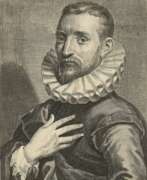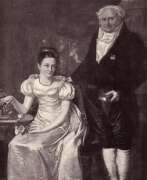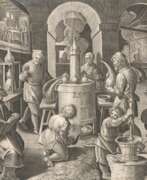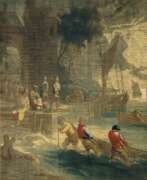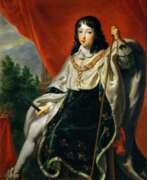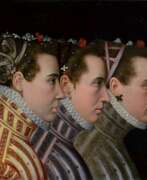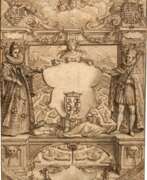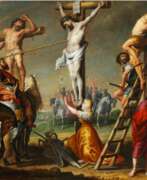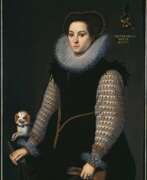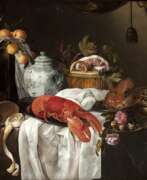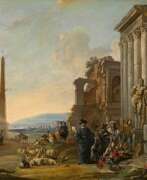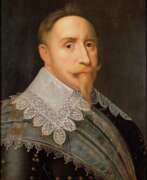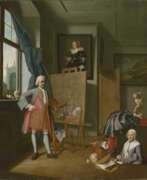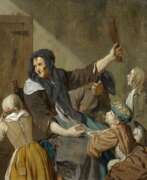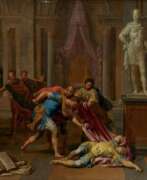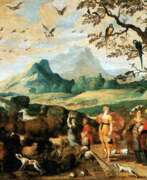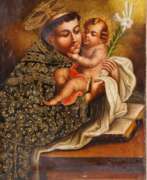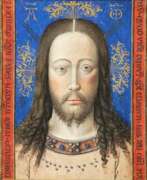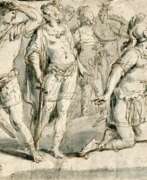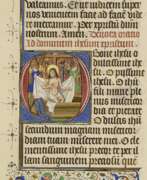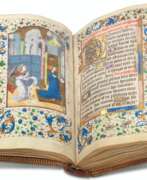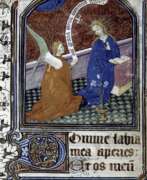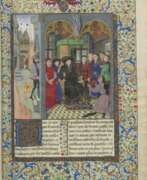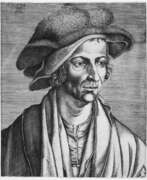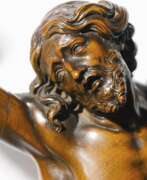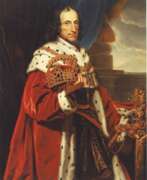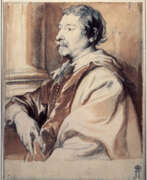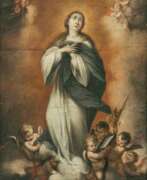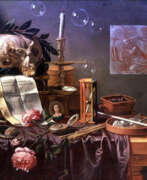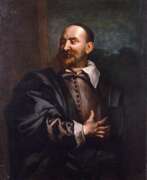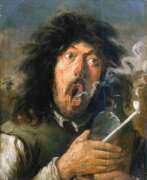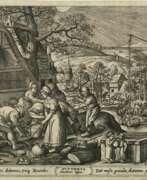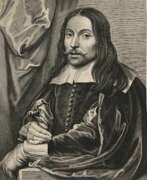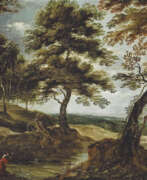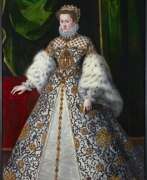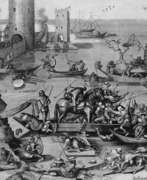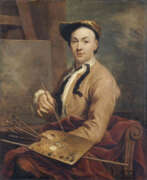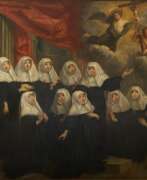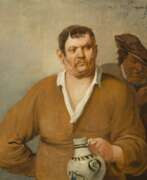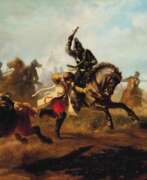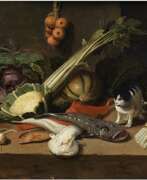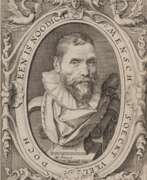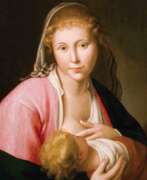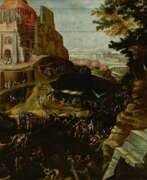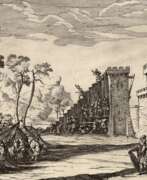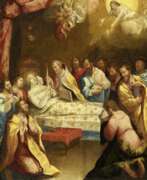Artists Flanders
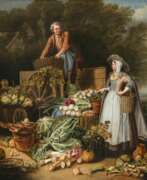

Pieter Angellis, also known as Pieter van Angellis, Peter van Angellis or Peter Angelles, was a French-born painter. He worked in Flanders, Germany, Italy, England, and France and is known for his landscapes and genre paintings of urban life. Angelles was a member of the Guild of St. Luke in Antwerp and Düsseldorf.
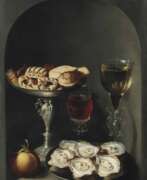

Osias Beert the Elder, a Flemish painter born around 1580 and active until his death in 1623, was a key figure in the development of still life painting in Northern Europe. His work, primarily focused on flower and banquet (or "breakfast") pieces, showcased a pioneering approach to these genres, setting a precedent for future artists.
Beert's technique involved painting on oak panels and copper, employing a glazing method that layered very fluid oil paints to achieve transparency and a rich color palette. This method allowed him to create still lifes that were not only visually appealing but also rich in detail and depth. He was known for his intricate compositions that often featured a high viewpoint and compact arrangements, providing a better sense of spatial coherence in his later works.
Despite the significant impact of his work, only a few signed pieces by Beert are known, making the attribution of his works challenging. His influence extended to his pupils and his nephew Frans Ykens, as well as other Antwerp artists such as Jacob Foppens van Es and Jacob van Hulsdonck, indicating his pivotal role in the early still life painting tradition in Flanders.
For collectors and experts in art and antiques, Osias Beert the Elder's contributions to the evolution of still life painting represent an essential chapter in the history of art. His ability to depict the transient beauty of flowers and the lavish detail of banquet scenes continues to captivate audiences and serves as a testament to his skill and creativity.
To delve deeper into the fascinating work of Osias Beert the Elder and to stay informed about new discoveries or auction events related to his oeuvre, consider signing up for updates tailored to enthusiasts of art history and antique collections. This subscription will ensure you are well-informed about the latest developments and opportunities related to this influential artist's work.
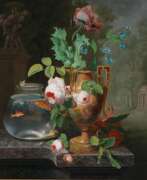

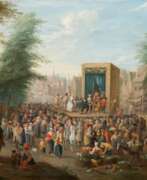

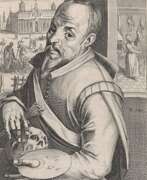

Joachim Beuckelaer, a masterful Flemish painter born around 1533, was renowned for his intricate market and kitchen scenes, which were abundant with detailed depictions of food and household items. His unique approach combined everyday life with religious narratives, often situating biblical episodes within the backdrop of bustling market scenes or domestic settings. This innovative blend of the mundane with the spiritual set the stage for future developments in Dutch and Flemish painting.
Beuckelaer's influence extended beyond his immediate geographic locale, impacting artists across Europe, from Italy to Spain, heralding a new appreciation for kitchen and market scenes that would flourish in seventeenth-century painting. His works were not only appreciated for their aesthetic and technical mastery but also for their ability to capture the essence of sixteenth-century Antwerp life, from the vibrancy of its markets to the intimacy of its kitchens.
His oeuvre includes a variety of subjects, from purely religious works to those that focus solely on still-life elements without any human figures, indicating his versatility and innovation as an artist. Beuckelaer was known for employing techniques that allowed him to efficiently reuse compositions, showcasing his ability to adapt and repurpose his work to meet the demands of his patrons.
Notable works by Beuckelaer, such as the "Four Elements" series, now housed in the National Gallery, London, demonstrate his skill in merging complex allegories with detailed observations from nature and daily life. These paintings are celebrated for their depth of detail and the way they foreground the role of women in the culinary and market spheres.
For collectors and experts in art and antiques, Joachim Beuckelaer's paintings offer a fascinating glimpse into the cultural and social dynamics of the sixteenth century, as well as the evolution of still-life and genre painting in the early modern period. His ability to weave together the secular and sacred, the abundant and the everyday, marks him as a significant figure in the history of art.
To remain informed about the latest discoveries, sales, and auction events related to Joachim Beuckelaer, consider signing up for updates. This subscription is an invaluable resource for those keen to explore the depths of Flemish painting and its enduring influence on European art history.
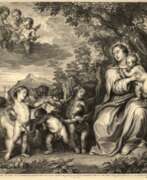

Schelte Adamsz Bolswert was a leading Dutch engraver, noted for his works after Rubens and Van Dyck. Both he and his older brother, Boetius à Bolswert, worked in Amsterdam and Haarlem before settling in Antwerp. For the last five years of his life Boetius worked exclusively on engravings after Rubens. Bolswert's plates were worked entirely with the graver, and he does not seem to have made any use of the drypoint. The freedom which this excellent artist handled the graver, the picturesque roughness of etching, which he could imitate without any other assisting instrument, and the ability he possessed of distinguishing the different masses of colours, have always been admired by the conoisseurs".
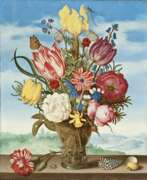

Ambrosius Bosschaert the Elder, born on January 18, 1573, in Antwerp and passing away in 1621 in The Hague, was a pivotal figure in the Dutch Golden Age of painting. Recognized for his remarkable contributions to the art of still life painting, particularly floral arrangements, Bosschaert founded a dynasty of painters who furthered his intricate style of floral and fruit painting. This legacy cemented Middelburg's status as a premier center for flower painting in the Dutch Republic.
Fleeing to the Northern Netherlands due to religious persecution, Bosschaert and his family settled in Middelburg around 1587, where he would spend the majority of his career. His paintings, known for their precision and vibrant composition, reflect the era's fascination with botany, merging scientific accuracy with artistic beauty. Bosschaert's work was not only celebrated for its aesthetic appeal but also for its symbolic and sometimes religious meanings, often painted on small copper canvases that highlighted the meticulous detail of each flower.
His influence and techniques were continued by his three sons and his brother-in-law, Balthasar van der Ast, ensuring the Bosschaert style flourished through the mid-17th century. Bosschaert's approach to flower painting laid the groundwork for what would become a defining genre in Dutch art, showcasing not just the beauty of nature but the wealth and intellectual curiosity of the era.
For collectors and experts in art and antiques, Ambrosius Bosschaert the Elder's contributions to still life and flower painting remain invaluable. His legacy is preserved in the meticulous bouquets that capture the transient beauty of flora, making his works sought after for both their historical significance and timeless appeal.
To stay informed about new discoveries, sales, and auction events related to Ambrosius Bosschaert the Elder, signing up for updates from art galleries and auction houses is recommended. This ensures access to the latest information and opportunities to acquire works by this master of still life painting.
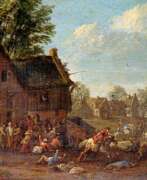

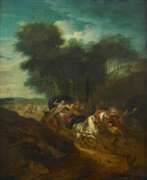

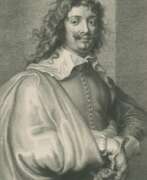

Adriaen Brouwer was a Flemish painter active in Flanders and the Dutch Republic in the first half of the 17th century. Brouwer was an important innovator of genre painting through his vivid depictions of peasants, soldiers and other "lower class" individuals engaged in drinking, smoking, card or dice playing, fighting, music making etc. in taverns or rural settings. Brouwer contributed to the development of the genre of tronies, i.e. head or facial studies, which investigate varieties of expression. In his final year he produced a few landscapes of a tragic intensity. Brouwer's work had an important influence on the next generation of Flemish and Dutch genre painters. Although Brouwer produced only a small body of work, Dutch masters Peter Paul Rubens and Rembrandt collected it.
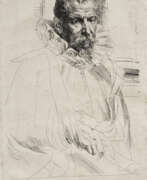

Pieter Brueghel the Younger was a Flemish artist celebrated for his detailed landscapes, religious themes, proverbs, and vibrant village scenes. Despite being the son of the illustrious Pieter Bruegel the Elder, Brueghel the Younger carved out his own niche in the art world, earning the moniker 'Hell Brueghel' for his dynamic scenes of fires and energetic copies of his father's peasant life portrayals.
Brueghel the Younger's original creations, such as "The Village Lawyer," showcase his keen observation of village life, merging the energy and boldness of 17th-century style with his father's idiom. His work is characterized by its lively, picturesque depiction of peasants, albeit some critics argue they lack the subtlety and humanism of his father's creations. Despite this, Brueghel the Younger's legacy includes a significant number of original works and copies that were rediscovered in the 20th century, highlighting his contribution to the Flemish painting tradition.
His workshop was known for its prolific output, especially in producing copies of Bruegel the Elder's compositions, a testament to the enduring popularity and influence of the Bruegel family's artistic legacy. However, Brueghel the Younger also impressed with his unique compositions, contributing to the genre of still life and village scenes with a distinct style that resonated well into modern times.
For collectors and experts in art and antiques, Pieter Brueghel the Younger's works represent an important period in Flemish art, offering insights into the evolution of genre painting and the detailed portrayal of rural life. His paintings, held in esteemed collections worldwide, continue to be studied and admired for their vibrancy, narrative quality, and historical value.
To explore more about Pieter Brueghel the Younger and to stay updated on sales and auction events related to his work, signing up for specialized updates can offer exclusive insights into the world of this influential Flemish painter. This subscription ensures enthusiasts and collectors are well-informed about developments related to Brueghel the Younger's oeuvre, enhancing their appreciation and understanding of his artistic legacy.
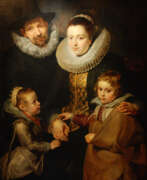

Jan Brueghel the Elder, a Flemish painter born in 1568 in Brussels, was a pivotal figure in the Baroque period known for his intricate landscapes, detailed still lifes, and genre scenes. The son of Pieter Bruegel the Elder, Jan was distinguished by his delicate brushwork, earning him the nicknames "Velvet" Brueghel, "Flower" Brueghel, and "Paradise" Brueghel, each reflecting a different aspect of his versatile artistic output. His monikers refer to his skill in rendering fabrics, his specialization in flower still lifes, and his creation of the paradise landscape genre, respectively.
After early training in Brussels, possibly under the guidance of his grandmother Mayken Verhulst, and further studies in Antwerp, Brueghel ventured to Italy, where he worked in Rome under the patronage of Cardinal Ascanio Colonna and met influential artists like Paul Bril. His Italian sojourn greatly influenced his style, especially in landscape painting. Upon returning to Antwerp, he established a flourishing workshop and became a master in the Guild of St. Luke. Brueghel's collaborations with Peter Paul Rubens are among the most celebrated in art history, showcasing a harmonious blend of landscape and figure painting.
Jan Brueghel the Elder's works are prized for their vibrant depiction of nature and meticulous attention to detail. His landscapes are not just backdrops but are lively settings filled with rich narratives and a variety of creatures, reflecting his deep appreciation for the natural world. His flower pieces are equally renowned for their variety and realism, often serving as allegorical or symbolic representations.
Brueghel's legacy extends beyond his paintings; he was a pivotal figure in the Antwerp artistic community, serving as dean of the Guild of St. Luke and court painter to the Archduke Albert of Austria and the Infanta Isabella Clara Eugenia of Spain. His influence continued through his children, with his son Jan Brueghel the Younger continuing his workshop and maintaining the family's artistic traditions.
For collectors and experts in art and antiques, Jan Brueghel the Elder's works represent a high point in Flemish Baroque art, offering a glimpse into the era's aesthetic values and the artist's profound observation of the world around him. His paintings, found in museums and galleries worldwide, continue to captivate audiences with their beauty and depth.
To stay informed about new discoveries, sales, and auction events related to Jan Brueghel the Elder's work, consider signing up for updates. This subscription will ensure that you are always in the know about opportunities to engage with the enduring art of this Flemish master.
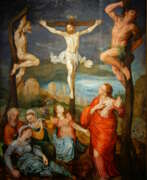

Raphael Coxie was a Flemish Renaissance painter mainly known for his portrait and history paintings. Details about the life and career of the artist are sketchy. He was only rediscovered as a distinctive artist in the 19th century. He was a pupil of his father and became master in the Mechelen Guild of Saint Luke in 1562. Raphael was a passionate gardener and friend of the Flemish botanist Carolus Clusius to whom he sent drawings of flowers, which Clusius used in his scientific publications. He was active from 1586 in Brussels where he became a master of the local painter's guild in 1605. In the period 1588-89 he spent time in Ghent on a major commission for a painting of the Last Judgement. While in Ghent Coxie also painted a Resurrection of Christ for the monks of the Abbey of Drongen. He is recorded in 1597 as making, in collaboration with Gilbert van Veen, several portraits commissioned by Philip II of Spain.
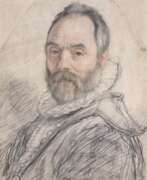

Giovanni da Bologna, also known as Jean de Boulogne (French), Giambologna (Italian), Fiammingo (Italian) and Jehan Boulongne (Flemish), was the last significant Italian Renaissance sculptor, with a large workshop producing large and small works in bronze and marble in a late Mannerist style.
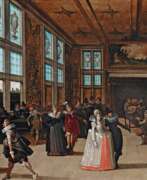

Louis de Caullery was a Flemish painter who is known for his architectural scenes, city views, genre scenes, allegorical compositions and history paintings. He was one of the pioneers of the art genre of courtly gatherings and the garden parties (fête champêtre) in Flemish painting.
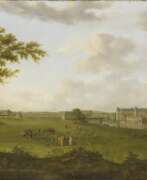

Hendrik Frans de Cort was a Flemish landscape painter and draughtsman. In 1770 he became a master in the Antwerp Guild of Saint Luke. His early landscapes from the time before he moved to England were often made in collaboration with other Flemish artists. De Cort is known for his topographical views of English and Welsh landscapes. These were painted in an Italianate idiom indebted to the style of Gaspar Dughet. He often painted on specially prepared mahogany panels.
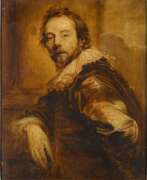

Adam de Coster, born around 1586 in Mechelen and passing away in 1643 in Antwerp, was a renowned Flemish painter and a key figure among the Antwerp Caravaggisti. This group of artists was part of an international movement that interpreted Caravaggio's work in a personal manner, known for their genre scenes with strong chiaroscuro effects. De Coster was particularly celebrated for his nocturnal scenes, earning him the nickname "Pictor Noctium" (literal translation „Painter of Nights“) due to his preference for tenebrist scenes.
His works often depicted subjects similar to those found in Caravaggio's paintings, such as card sharps, fortune tellers, and musical performances, showcasing de Coster's fascination with the play of light and shadow. Notable pieces by de Coster include "Three Singers," which demonstrates his skill in rendering the texture of fabrics and the dramatic effects of light on his subjects, and "A Man Singing by Candlelight," capturing a moment's drama through meticulous lighting.
Adam de Coster's art continues to captivate audiences with its atmospheric intensity and meticulous attention to detail. His contributions have solidified his place in the history of Flemish painting, with works featured in prestigious collections, including the Liechtenstein Museum in Vienna and the National Gallery of Ireland.
For collectors and experts in art and antiques, Adam de Coster's masterpieces represent a fascinating intersection of Flemish tradition and Caravaggesque innovation. To stay informed about new discoveries, sales, and auction events related to Adam de Coster, consider signing up for updates from art galleries and auction houses. This will ensure you have access to the latest information and opportunities to appreciate the legacy of this luminous master of painting.
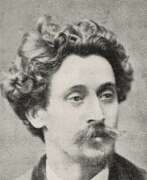

Louis Victor Antonio Artan de Saint-Martin was a Belgian marine painter. His work was influenced by the Barbizon School and the French marine painter Eugène Boudin. A convinced realist, he confined himself to the familiar North Sea, which he studied every day. He was fascinated by dramatic effects and exceptional atmospheric conditions. Just as in the paintings of the Tervuren school, his painting, created by the use of large quantities of pigment applied in copious layers or large masses skilfully distributed and then worked with a trowel, gives the work an appearance of breadth and immediacy.
Saint-Martin was one of the sixteen co-founders of the Société Libre des Beaux-Arts, an association opposed to the stylistic hegemony of the academies and salons. After 1880 he worked in a more impressionist style, and in 1881 he became a Chevalier de l'Ordre de Léopold. Two years later, the artist was awarded a gold medal at the International Colonial and Export Exhibition in Amsterdam.
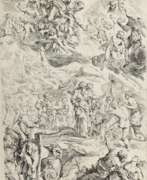

Franz Ertinger (German: Franz Ertinger) was a French painter born in Germany but working in France and Flanders, a member of the Guild of St. Luke in Antwerp.
Ertinger is a versatile artist who has applied his talents in various fields of art. He is known as a painter, illustrator and printer of books, draughtsman, designer and writer, and worked as a royal engraver in Paris.
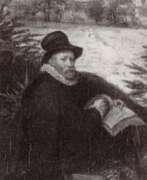

Lucas van Valckenborch was a Flemish painter, mainly known for his landscapes. He also made contributions to portrait painting, and allegorical and market scenes. Court painter to Archduke Matthias, the governor of the Spanish Netherlands in Brussels, he later migrated to Austria and then Germany where he joined members of his extended family of artists who had moved there for religious reasons.
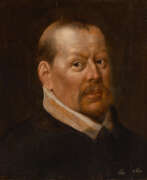

Frans Floris de Vriendt the Elder was a Flemish painter and engraver of the 16th century.
The artistic style of Frans Floris was strongly influenced by the Italian Renaissance. He combined elements of Italian mannerism with his own interpretation, creating a distinctive style characterized by attention to detail, vivid colours and dynamic compositions.
Frans Floris was known for his large-scale historical and mythological paintings, which often depicted complex subjects and included many figures. His works demonstrated his ability to create dramatic and evocative scenes, exploring themes of religion, mythology and human emotion.


Jacques Fouquières, an eminent Flemish landscape painter active in the early 17th century, was celebrated for his detailed and atmospheric landscapes. Born around 1580 and active mainly in France, Fouquières's artistry flourished in a period rich in landscape painting. His style was heavily influenced by the Northern style prevalent during the late 16th and early 17th centuries, characterized by wide, panoramic landscapes with craggy rocks and a blue-greenish palette.
Fouquières's work was not just confined to painting; he was also a skilled draughtsman. His early works, like the "Winter Landscape" of 1617 in the Fitzwilliam Museum, showcase the influence of artists such as Joos de Momper, Jan Brueghel the Elder, Adriaen van de Venne, and Hendrick Avercamp. This particular painting is notable for its portrayal of a cold, wintry scene, exhibiting a mastery of the Northern landscape tradition. However, in his 1622 Forest Landscape, now in the Wallraf–Richartz Museum, Fouquières broke from this tradition, opting for narrower focuses and darker, more concentrated depictions of trees.
One of his notable works, "Landscape with ruins, people and animals," is preserved in The Metropolitan Museum of Art. This piece exemplifies Fouquières's talent in creating engravings, a medium that allowed him to capture intricate details of landscapes and everyday life.
His legacy extends beyond his works; he was a teacher to notable artists like Philippe de Champaigne and Matthieu van Plattenberg. Despite the success in his early career, his life ended in relative poverty, as evidenced by the modest inventory of his estate.
For collectors, auctioneers, and experts in art and antiques, the works of Jacques Fouquières represent a significant period in the history of landscape painting. His contributions to the art world during a pivotal era in European art history continue to be celebrated and studied.
If you have a keen interest in Jacques Fouquières's works or wish to stay informed about sales and auctions of his art, subscribing to updates would be beneficial. This will ensure you receive timely information about new sales and auction events related to his art.


Frans Francken the Younger was a distinguished Flemish painter of the Baroque period, celebrated for his versatility and innovation in the art scene of the early 17th century. Born in 1581 in Antwerp, where he also died in 1642, Francken hailed from the prolific Francken family of artists, establishing himself as the most prominent among them. His contribution to Flemish art includes a wide array of subjects, spanning large altarpieces for churches to intricate cabinet pictures featuring historical, mythological, or allegorical themes.
Francken's work is particularly noted for his creation of collectors' cabinet paintings, a genre that depicted the interiors of collectors filled with art, curiosities, and natural specimens, embodying the era's intellectual pursuits and the burgeoning culture of connoisseurship. Moreover, Francken was instrumental in the development of singeries, humorous paintings featuring monkeys engaging in human activities, critiquing the follies of mankind through satire. His collaborative efforts with other artists enriched his work, allowing him to incorporate figures and narrative depth into various compositions, seamlessly blending his expertise with the landscapes, architectural settings, and still lifes created by his contemporaries.
Francken's artistic legacy is marked by his successful workshop, his role as a master in the Antwerp Saint Luke's Guild, and his significant influence on the development of new subject matter and genres within Flemish painting. His works, such as "Mankind's Eternal Dilemma: The Choice Between Virtue and Vice," remain celebrated for their detailed craftsmanship and symbolic richness, housed in prestigious museums including the Museum of Fine Arts, Boston.
For collectors and art history aficionados, Francken's oeuvre offers a rich tapestry of Baroque artistry, reflecting the dynamism of 17th-century Flemish culture and the depth of humanistic and religious themes explored during the period.
To delve deeper into the world of Frans Francken the Younger and to stay updated on new discoveries, sales, and auction events related to his works, consider signing up for specialized updates. This subscription is tailored for enthusiasts eager to explore the intersections of art, history, and culture, promising insightful content on one of Flemish art's most influential figures.
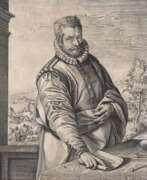

Philips Galle was a Dutch publisher, best known for publishing old master prints, which he also produced as designer and engraver. He is especially known for his reproductive engravings of paintings.
As a resident of Antwerp, Galle witnessed numerous events of the Eighty Years War, notably the siege and looting of the town in 1576 by the Spaniards, called "The Spanish Fury". This rather personal book, which was translated in several languages soon after its first publication, shows Galle as a peace-loving person who intended to stay far away from the political and military turmoil of his era.
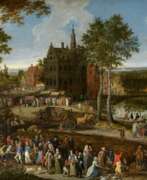

Peeter Gijsels was a Flemish painter of the Baroque period.
Peeter Gijsels is known for his landscapes, architectural compositions and still lifes. He is also considered a genre painter as he painted scenes of village markets and church kermis. His landscapes in the style of Jan Bruegel the Elder were in great demand during his time.
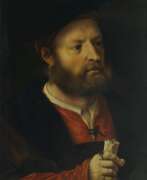

Jan Gossaert was a French-speaking painter from the Low Countries also known as Jan Mabuse (the name he adopted from his birthplace, Maubeuge) or Jennyn van Hennegouwe (Hainaut), as he called himself when he matriculated in the Guild of Saint Luke, at Antwerp, in 1503. He was one of the first painters of Dutch and Flemish Renaissance painting to visit Italy and Rome, which he did in 1508–09, and a leader of the style known as Romanism, which brought elements of Italian Renaissance painting to the north, sometimes with a rather awkward effect. He achieved fame across at least northern Europe, and painted religious subjects, including large altarpieces, but also portraits and mythological subjects, including some nudity.
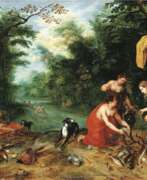

Jacob Grimmer was a Flemish painter who was active during the Late Renaissance. He specialised in landscapes and genre scenes, often depicting the everyday life of peasants.
His style was strongly influenced by Pieter Bruegel the Elder and the works of Leonardo da Vinci and Raphael.
Grimmer's paintings are characterized by detailed, realistic depictions of nature. His landscapes are characterized by wide expanses and intricate detail.
Jacob Grimmer was known for his ability to capture the nuances of human behaviour, so his genre works depict the lives of peasants with a touch of humour and whimsy.
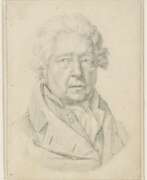

Willem Jacob Herreyns, the Younger, was a Flemish painter of history subjects and portraits. He is regarded as one of the last painters in the tradition of the Flemish Baroque and the last follower of Peter Paul Rubens. Herreyns’ work was very highly regarded in his time. His religious compositions stand in the Rubens tradition. Herreyns is considered a draughtsman with a precise line, but his work shows a certain coldness and lacks originality.


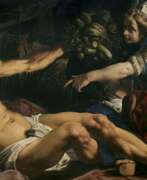

Abraham Janssens was a Flemish painter, who is known principally for his large religious and mythological works, which show the influence of Caravaggio. He was the leading history painter in Flanders prior to the return of Rubens from Italy.


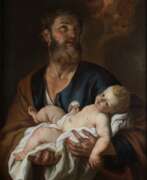

Jacob Leyssens / Lyssens was a Flemish painter and decorator. After training in Antwerp, he spent a long time in Rome. After his return to Antwerp, he was active as a painter and decorator and collaborated with prominent Antwerp still life painters such as Gaspar Peeter Verbruggen the Younger and Jan Baptist Bosschaert. He became a member of the Bentvueghels, an association of mainly Dutch and Flemish artists working in Rome. Only a few of his works are known, one of which is in the collection of the Hermitage Museum in Saint Petersburg. He decorated many rooms and ceilings in prominent residences and buildings in Antwerp. He is known to have collaborated as a staffage painter with other artists.
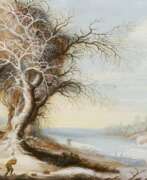

Gijsbrecht Leytens was a Flemish landscape painter of the Early Baroque period. He was famous for his depiction of winter landscapes, which were considered his speciality and were characterised by a highly individualised style. He is considered one of the least studied Flemish painters of the Antwerp School.
Geisbrecht Leitens became a member of the Guild of Saint Luke in Antwerp in 1611. From that time he was entitled to open his own workshop in the city and train apprentices.
The master carefully observed winter nature and birds and developed an individual manner which distinguished him from the philosophical generalisations of Pieter Bruegel the elder or the cosy details and findings of Lucas van Falkenborgh. Trees in his paintings are usually depicted covered in snow, often oddly shaped. The branches of the denuded trees are replete with representations of various birds. The artist's creative style may have been influenced by paintings from the Dutch Mannerism period.
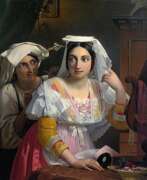

Jan Baptist Lodewyck Maes was a Belgian genre painter active in Italy. Maes studied at the Academy of Ghent. He exhibited for the first time at that city's fair in 1810. He won prizes in all the competitions he entered and in 1820 received a grant from the city of Ghent. Thanks to the Belgian Rome Prize received in 1821, he first visited Paris and then went on to Italy. In 1822 he copied works by old masters in the Uffizi Museum. In 1824 he settled in Rome. Maes kept in touch with his hometown and regularly sent works to Belgian salons. He was a corresponding member of the Royal Netherlands Academy of Sciences.
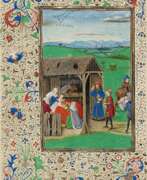

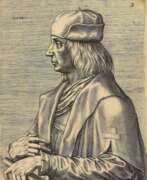

Quentin Matsys (Dutch: Quinten Matsijs), a Flemish painter born around 1466 in Leuven, is recognized as a pivotal figure in the Early Netherlandish tradition and a founder of the Antwerp school of painting. His initial training as an ironsmith in his father's workshop lent a unique craftsmanship to his artistic endeavors. Matsys' works, which often contained religious themes and satirical elements, were instrumental in the transition from medieval to Renaissance art in northern Europe.
Matsys' early works exhibit the influence of Hans Memling, and later, his exposure to Italian Renaissance artists, especially Leonardo da Vinci, is evident in his refined technique. This amalgamation of Northern European and Italian influences resulted in a distinctive style that earned him the reputation as the leading painter in Antwerp during the early 16th century.
Today, Matsys' masterpieces are housed in prestigious institutions like the National Gallery in London, serving as a testament to his enduring legacy. His contributions to the art world resonate with collectors and historians alike, who admire his innovative blend of technical skill and evocative expression.


Livio Mehus, née Lieven Mehus, was a Flemish and Italian Baroque painter, draughtsman, and printmaker.
Mehus lived and worked most of his life in Florence, painting allegories, battle scenes and landscapes, portraits and self-portraits.
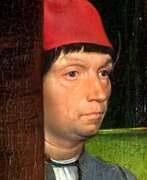

Hans Memling (German Hans Memling, Dutch Jan van Mimmelynghe, Latin Johannes Memmelinc or Memlinc) is a Flemish painter of German origin, one of the most important artists of Flanders of the Northern Renaissance. Continuing the late Gothic painting tradition, Memling primarily painted spiritual themes. Born in Hesse, he worked mainly in Bruges, where today there is a museum named after him.


Herri met de Bles is a Flemish artist, along with Joachim Patinir, one of the founders of European landscape painting. He painted mainly landscapes with multi-figured compositions. Like Patinir, his style is characterized by stylized images of rocks and a careful rendering of aerial perspective.
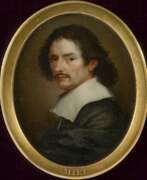

Jan Miel was a Flemish painter and printmaker who worked in Italy.
As a young man Miel worked in the Bamboschade genre: his paintings depict dancing villagers, gamblers and charlatans, barbers and shoemakers, traveling musicians and actors.
Miele diversified the genre painting of the time with carnival scenes. Miele also executed several frescoes in Roman churches, decorated the Quirinale Palace, and was court painter to the Duke of Savoy. Later he moved away from genre painting and painted historical subjects in the classical style.
Miele's works are kept in many museums in Europe and the United States, several of them in the Hermitage.
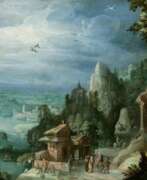

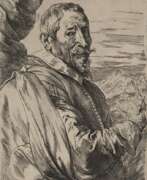

Joos de Momper the Younger was a Flemish landscape painter active in Antwerp between the late 16th century and the early 17th century. Brueghel's influence is clearly evident in many of de Momper's paintings. His work is situated at the transition from late 16th-century Mannerism to the greater realism in landscape painting that developed in the early 17th century. He achieved considerable success during his lifetime.
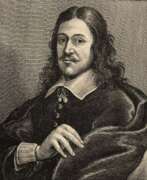

Bonaventura Peeters the Elder was a prominent Flemish painter, draughtsman, and etcher specializing in marine art during the 17th century. His extensive body of work encompassed marine battles, storms at sea, shipwrecks, and views of ships in rivers and harbours.
Peeters displayed a keen understanding of ships, capturing their intricate details. His earlier works exhibited tonal landscapes influenced by Dutch painting, while later pieces reflected vibrant colors inspired by Italian classicism. He skillfully depicted dramatic shipwrecks, serene ports, and intricate portrayals of ships. Many of his paintings depicted actual locations along the North Sea and the river Scheldt, while others showcased imagined scenes of far-away Mediterranean and Middle Eastern ports. Peeters also collaborated with family members and fellow artists, and his drawings and engravings were included in notable publications like Blaeu's Atlas Maior.
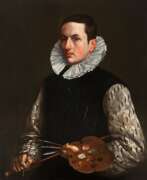

Frans Pourbus the Elder was a Flemish Renaissance painter born in 1545 in Bruges, known for his portraiture and religious compositions, as well as a few genre scenes. He inherited a rich artistic legacy as the son of the painter Pieter Pourbus and the father of Frans Pourbus the Younger, an internationally recognized portraitist.
Pourbus’ art is celebrated for its meticulous detail and psychological depth, particularly in his portraits which primarily featured members of the rising middle class, high clergy, local aristocrats, and foreign dignitaries. His acute observational skills and subtle modeling of facial features provided a vivid psychological insight into his sitters, as seen in the Portrait of an Unknown Man.
His religious works were often commissioned by patrons outside Antwerp and included significant projects like the History of Saint Andrew and the Triptych of Viglius Aytta for St Bavo's Cathedral in Ghent. After the Iconoclastic Fury in 1566, he received a prestigious commission to redecorate the choir of the St. Martin's Abbey church in Tournai.
Pourbus’ works are held in high esteem and can be found in several museums and galleries, such as the National Galleries of Scotland and The National Gallery in London, where his pieces continue to draw the admiration of art collectors and experts in the field.
For enthusiasts and experts in Renaissance art and those interested in the intricate craft of portrait painting, Frans Pourbus the Elder’s work stands as a significant reference point for the cultural and artistic achievements of the period. To remain updated on sales and auction events related to Frans Pourbus the Elder, art collectors and antiques experts are encouraged to sign up for updates. This will ensure that you are always informed about new opportunities to acquire works by or related to this master artist.
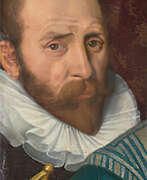

Frans Pourbus the Younger was a Flemish artist, renowned for his sophisticated portraiture, who gained prominence for his meticulous depiction of opulent costumes, jewelry, and drapery. Born in Antwerp in 1569 into a family with a rich artistic lineage, Pourbus honed his craft in the vibrant cultural milieu of the time. His grandfather, Pieter Pourbus, was a leading portrait and history painter in Bruges, while his father, Frans Pourbus the Elder, was a significant figure in portrait and genre painting. The younger Pourbus’s artistry was characterized by its attention to detail rather than the exploration of dramatic scenes or landscapes, a style that resonated with the sensibilities of the courts he served.
Pourbus's career flourished as he became a court painter to influential figures such as Archduke Albert and Infanta Isabella in Brussels. His reputation for producing portraits that were aesthetically pleasing to his patrons propelled him to work for Vincenzo Gonzaga, Duke of Mantua, and subsequently, Marie de' Medici, Queen of France, in Paris. His works are preserved in prestigious collections across Europe, including the Louvre, the Prado, the Rijksmuseum, and the Metropolitan Museum of Art. Notable pieces such as the portrait of Eleonora de' Medici Gonzaga and the Infanta Isabella Clara Eugenia of Spain exemplify his skill in capturing the grandeur of the European aristocracy of the 17th century.
Art collectors and antiquities experts who admire the grandiose style of early European court portraiture find in Pourbus's work a quintessential representation of the era's aesthetics. His paintings, replete with detailed costume and adornment, provide a window into the past's lavishness and serve as enduring artifacts of cultural heritage. For updates on new product sales and auction events related to Frans Pourbus the Younger, signing up for our newsletter is a discreet and direct way to stay informed.
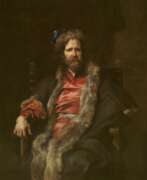

Marten Rijckaert was a Flemish Baroque painter, famous for his landscapes in the Italian manner.
Marten Rijckaert was a pupil of Tobias Verhacht. He was registered as a master at the Antwerp Guild of St Luke's in 1607. Reikart was a close friend of Antonis van Dyck.
His work is characterised by rocky forest landscapes, often with waterfalls, ruins and architecture. These Italian landscapes are close to the works of Flemish painter Paul Brill, and the panoramic concept of his compositions owes a debt to the works of Jan Brueghel the Elder.
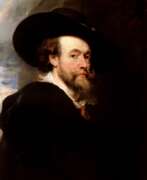

Peter Paul Rubens was a distinguished Flemish Baroque painter, renowned for his dynamic, vibrant, and sensuous paintings. Born on June 28, 1577, in Siegen, Westphalia, Germany, Rubens' family moved back to Antwerp in the Spanish Netherlands (now Belgium) after his father's death. He was raised in his mother’s Roman Catholic faith and received a classical education. He began his artistic training in 1591 and later traveled to Italy, where he was profoundly influenced by Renaissance masters like Titian, Tintoretto, and Veronese. This experience significantly shaped his artistic style.
Rubens' art is celebrated for its emphasis on movement, color, and sensuality. He was particularly skilled in depicting religious and mythological scenes, portraits, and landscapes. Some of his notable works include "The Descent from the Cross" and "The Raising of the Cross," which are prime examples of Baroque religious art, showcasing his unique style that blended influences from Italian Renaissance and his own innovations.
Rubens was not just a painter but also a diplomat, serving at various European courts. He was knighted by both Philip IV of Spain and Charles I of England. His diplomatic missions often intertwined with his artistic endeavors, as seen during his travels to Spain and Italy. In addition to painting, he was involved in designing tapestries, prints, and book title-pages. He ran a large workshop in Antwerp, producing works that were popular with nobility and art collectors across Europe. His studio was in his home, the Rubenshuis, now a museum.
His influence extended to his students, notably Anthony van Dyck, and his collaborative works with other artists like Jan Brueghel the Elder. Rubens' work continued to be celebrated for its vitality and influence on the Baroque style, making him one of the most influential artists of his time.
For those interested in the work and life of Peter Paul Rubens, many of his works can be found in museums and galleries worldwide, including the National Gallery in London, which houses several of his paintings like "A View of Het Steen in the Early Morning" and "Minerva protects Pax from Mars ('Peace and War')".
To stay updated on new product sales, auction events, and more related to Peter Paul Rubens, sign up for our updates. We provide essential information tailored for collectors and experts in art and antiques, focusing on the magnificent work of Rubens and his enduring legacy in the world of art.
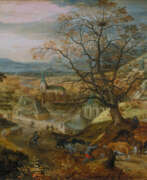

Jacob Savery the Elder was a Flemish painter, etcher and draughtsman. He was trained in Antwerp and later moved to the Dutch Republic after 1584. He specialised in still lifes, animals, landscapes en genre paintings.
Jacob’s earliest known works of 1584-86 are mostly cabinet-size landscapes that clearly show the influence of his master Hans Bol.
In Amsterdam Jacob was active as painter, etcher and draftsman. He produced a series of etchings in Pieter Bruegel the Elder's stipple technique depicting idealized rural scenes full of picturesque details, such as castle ruins and rabbit hunts.
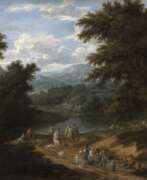

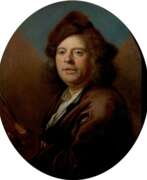

Jan Siberechts was a Flemish landscape painter whose career spanned both his native land and England. Initially, Siberechts developed a personal style of landscape painting in Antwerp, emphasizing Flemish countryside and country life. His work was influenced by Dutch Italianate landscape painters such as Nicolaes Berchem and Karel Dujardin, reflecting a blend of local and Italianate elements. This phase of his career was marked by vivid depictions of the Flemish rural life, with robust country girls in bright attire becoming a signature motif of his paintings.
Siberechts moved to England around 1672, where he significantly contributed to the English landscape tradition. In England, he painted decorations for the Duke's Cliveden House and later, traveled extensively, completing commissions for aristocratic clients. His English landscapes maintained their Flemish character but also started to focus more on universal themes, with less emphasis on figures and more on the scenery itself. These works are characterized by powerful trees, soft light on distant hills, and a relatively dark foreground to highlight the illuminated vistas in the background.
Siberechts is credited as the 'father of British landscape' for his pioneering country house portraits, blending detailed naturalistic views of stately homes into atmospheric landscapes. This innovative approach had a lasting influence on English landscape painting. His work, such as the views of Longleat and the Belsize Estate, represents an important step in the development of topographical painting, merging Flemish influences with the emerging English landscape tradition.
For collectors and experts in art and antiques, Siberechts' oeuvre offers a unique window into the transnational flow of artistic ideas in the 17th century, blending Flemish traditions with the nascent English landscape genre. His paintings, celebrated for their detail and historical topographical interest, can be found in prestigious collections such as the Tate Gallery London and the Victoria and Albert Museum.
For updates on exhibitions, sales, and auction events related to Jan Siberechts' work, art enthusiasts are encouraged to sign up for dedicated newsletters. This ensures that they remain informed about the latest opportunities to explore and appreciate the contributions of this influential Flemish artist to the landscape painting genre.
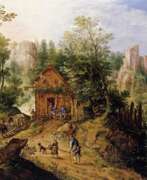

Pieter Stevens the Younger was a Flemish painter and draughtsman known for his landscapes. He left Flanders to work for the court of Emperor Rudolf II in Prague. The circulation of prints made after a series of romantic Bohemian landscape drawings by Stevens and other artists had an important influence on the development of Flemish and Dutch landscape art in the 17th century.
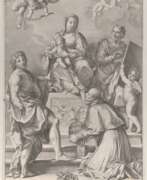

Robert van Audenaerde or Ouden-Aerd was a Flemish painter and engraver. He was first a scholar of Francis van Mierhop, but he afterwards studied under Hans van Cleef. When he was twenty-two years of age he went to Rome, where he became a disciple of Carlo Maratti. Under this master he became a good painter of historical subjects. He amused himself with the point in his leisure moments, and some of his plates were shown to Carlo Maratti, who recommended him to devote himself entirely to the art of engraving. He, however, painted several pictures for the churches of his native city, to which he returned after an absence, it is said, of thirty-seven years. The plates which he executed entirely with the graver are not considered equal to those in which he introduced the point. His drawing shows a perfect acquaintance with the human figure, and is very correct. The principal part of his prints are after the pictures of Carlo Maratti.
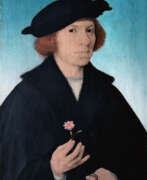

Joos van Cleve, also known by his real name Joos van der Beke, was a prominent Netherlandish painter, active mainly in Antwerp from about 1511 until his death in 1540 or 1541. His work predominantly centered around religious subjects and portraits, including notable commissions for the French King Francis I during his time at the French court. His artistic oeuvre reflects a blend of traditional Netherlandish painting techniques with contemporary Renaissance styles, showcasing his direct knowledge of local art combined with an awareness of Italian developments.
Van Cleve's work was characterized by its elaborate detail, particularly in his altarpieces which often incorporated portraits and landscapes, demonstrating his refined painting style. His success in Antwerp was significant, and he was also recognized at the French court, indicating his high regard as a portrait artist. Notably, Van Cleve had the opportunity to paint members of the royal court, including King Francis I and Queen Eleanor of Austria, underscoring his skills in portraiture.
His paintings are recognized for their sensitivity to color and a unique solidity of figures, with some works showcasing the popular style of Antwerp Mannerism. Van Cleve was an innovator in introducing broad world landscapes in the backgrounds of his paintings, a technique that became popular in sixteenth-century northern Renaissance paintings. Despite his contributions to the Renaissance art movement, Van Cleve also produced works that were highly eclectic, drawing on the styles of earlier Netherlandish masters as well as Italian influences, particularly in his use of sfumato, evident in his Virgin and Child compositions.
For art collectors and experts, Joos van Cleve's legacy offers a rich exploration into the transition from medieval to Renaissance art in Northern Europe. His body of work, found in prestigious collections such as the National Gallery in Prague, the Louvre, and the Royal Museums of Fine Arts of Belgium, remains a testament to his versatility and skill as a painter of both religious narratives and royal portraits.
To delve deeper into the fascinating world of Joos van Cleve and to stay informed about exhibitions or sales featuring his work, consider signing up for updates from art institutions and auction houses. This subscription will ensure you remain at the forefront of developments and opportunities related to this influential artist's oeuvre, enhancing your collection and understanding of Renaissance art.
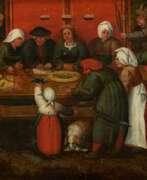

Marten van Cleve the Elder was a Flemish painter and draftsman active in Antwerp between 1551 and 1581. Van Cleve is mainly known for his genre scenes with peasants and landscapes, which show a certain resemblance with the work of Pieter Bruegel the Elder. Marten van Cleve was one of the leading Flemish artists of his generation. His subjects and compositions were an important influence on the work of Pieter Brueghel the Younger and other genre painters of his generation.
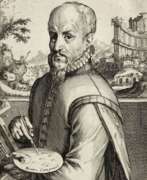

Hendrik van Cleve III was a Flemish painter, draughtsman and designer of prints. He is known for topographical views, including views of Rome and the Vatican, as well as imaginary landscapes. Traditionally, a large number of depictions of the construction of the Tower of Babel have been attributed to him but most of these are now attributed to anonymous Flemish painters, who are referred to as 'The Hendrik van Cleve III Group'.
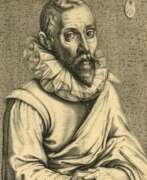

Gillis van Coninxloo (now also referred to as Gillis van Coninxloo II but previously referred to as Gillis van Coninxloo III) was a Flemish painter of landscapes who played an important role in the development of Northern landscape art at the turn of the 17th century. He spent the last 20 years of his life abroad, first in Germany and later in the Dutch Republic.
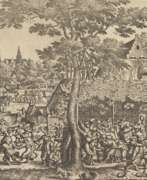

Pieter van der Borcht the Elder was a Flemish Renaissance painter, draughtsman and etcher. He is regarded as one of the most gifted botanical painters of the 16th century. Pieter van der Borcht the Elder also introduced new themes such as the 'monkey scene' (also called 'singerie') into Northern art.
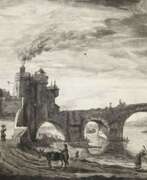

Jacob van der Heyden was a Flemish Baroque painter, sculptor and engraver. According to Houbraken he was a painter from Strasbourg who painted for royalty. According to the RKD he worked in Strasbourg, Frankfurt, and Sweden. and was known for portraits, landscapes and historical allegories. Most of his work that survives today are engravings. He died in Brussels.
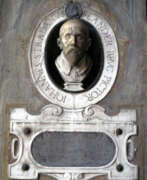

Jan van der Straet (Italian: Giovanni Stradano, Latin: Stradanus) was a Flemish and Italian Mannerist painter.
Van der Straet is best known for his large-scale frescoes, which decorate several important buildings in Florence and Rome. He also created numerous prints and paintings on a variety of subjects, including mythology, biblical scenes, and historical events.
One of his most famous works is a series of prints called Nova Reperta (New Discoveries), which depict some of the major technological advancements of the 16th century, such as the printing press, the compass, and the telescope. The series was highly influential and helped to spread knowledge and awareness of these new technologies throughout Europe.
Van der Straet was a highly skilled artist and his works are known for their attention to detail and realism. He was also a skilled draftsman and many of his drawings and sketches have survived to this day. His influence can be seen in the works of many later artists, including Rubens and Rembrandt.
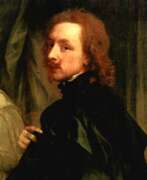

Anthony van Dyck, a Flemish painter born in 1599 in Antwerp and passed away in 1641 in London, is celebrated as one of the foremost Baroque painters of the 17th century. His notable contributions to the art world include his exceptional portraits of European aristocracy, as well as his religious and mythological paintings. Van Dyck's early exposure to art was influenced significantly by his apprenticeship with Hendrik van Balen and later, by the profound impact of working alongside Peter Paul Rubens. His mastery was recognized early on, leading him to set up his own workshop by the age of 15.
Van Dyck's journey to Italy in 1621 marked a pivotal phase in his career, allowing him to immerse himself in studying the Italian masters and commencing his successful stint as a portraitist. His style evolved under the influence of Titian, evident from his vibrant use of color and refined modeling of form. Van Dyck's Italian period not only honed his artistic skills but also established his reputation as a painter of consequence.
Upon returning to Antwerp, van Dyck's portraits became highly sought after, leading to commissions from notable figures such as Archduchess Isabella and Queen Mother Maria de' Medici. His role as a court painter further solidified in England under the patronage of King Charles I, where he was knighted and appointed as the principal painter, profoundly shaping the aristocratic character of Charles I's reign through his portraits.
Van Dyck's legacy extends beyond his death, having influenced English portrait painting for over a century. His innovative techniques in watercolour and etching, along with his sophisticated portrayal of subjects, continue to be admired. His art not only showcases his technical prowess but also reflects the cultural and social nuances of his era, making his work a significant study for collectors and art historians alike.
For enthusiasts eager to explore the intersections of art, history, and culture through the lens of Anthony van Dyck's work, staying informed about new discoveries and auction events is essential. Signing up for updates can provide exclusive insights into the world of one of the most influential figures in Flemish art. This subscription ensures that collectors and experts are well-informed of any developments related to van Dyck's oeuvre, enhancing their understanding and appreciation of his contributions to the art world.
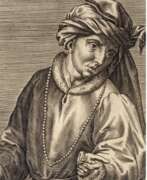

Jan Van Eyck, a prominent figure in the realm of art, was a Flemish painter renowned for his pioneering role in the development of oil painting. Born before 1395 in Maaseik, now Belgium, Van Eyck's work signifies a pivotal moment in the Early Netherlandish painting movement, contributing substantially to the Northern Renaissance's flourishing. His employment as court painter to Philip the Good, Duke of Burgundy, allowed him engagements that ranged from diplomatic missions to producing commissioned portraits, demonstrating his versatility beyond the canvas.
Van Eyck's mastery in oil painting brought to life detailed, realistic depictions of both secular and religious subjects, with a notable emphasis on naturalistic textures and light. His technique involved layering translucent oil paints to achieve an unmatched depth and vibrancy, a method that influenced generations of artists to come. Among his approximately twenty surviving works, the Ghent Altarpiece stands out as a monumental piece, showcasing his adept use of oil paint to create intricate details and luminous colors. Despite some debate over his brother Hubert's involvement, Jan's contribution to its creation is undisputed, cementing his legacy as a key figure in art history.
In addition to the Ghent Altarpiece, Van Eyck is celebrated for the Arnolfini Portrait, a work famed for its complex symbolism and innovative use of mirror reflection to incorporate the viewer into the scene. This painting, along with others like the Portrait of a Man (Self Portrait?), highlights Van Eyck's skill in creating vivid, textured surfaces that mimic the real world, blurring the lines between art and reality.
For collectors and experts in art and antiques, Van Eyck's oeuvre represents a crucial chapter in the evolution of Western art, offering insights into the cultural and technological advancements of his time. His works, preserved in some of the world's leading museums, continue to attract admiration for their technical brilliance and aesthetic beauty.
If you're intrigued by the innovation and mastery of Jan Van Eyck, consider signing up for updates on new product sales and auction events related to his work. This subscription offers a unique opportunity to stay informed about the latest discoveries and offerings in the realm of Van Eyck's enduring legacy.


Jan van Hemessen was a leading Flemish Renaissance painter, belonging to the group of Italianizing Flemish painters called the Romanists, who were influenced by Italian Renaissance painting. Van Hemessen had visited Italy during the 1520s, and also Fontainebleau near Paris in the mid 1530s, where he was able to view the work of the colony of Italian artists known as the First School of Fontainebleau, who were working on the decorations for the Palace of Fontainebleau. Van Hemessen's works show his ability to interpret the Italian models into a new Flemish visual vocabulary.


Willem van Herp was a Flemish Baroque painter specializing in religious paintings and small cabinet paintings of "low-life" genre scenes. He operated a large workshop and through his good connections with Antwerp art dealers helped spread the Flemish Baroque style internationally.
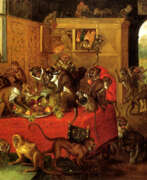

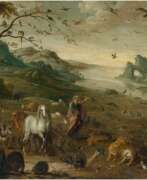

Izaak (Isaac) van Oosten was a Flemish Baroque landscape and cabinet painter active in Antwerp.
His landscapes are simple with open spaces and mostly hilly landscapes typically filled with a pond or road and several clusters of trees. There is an overall sense of gentleness and calm in these compositions. An even, gentle light spreads over the entire painting and the trees are untouched by the wind. A number of his landscapes have a Mediterranean flavour.
Works by van Oosten can be found in the collections of the Uffizi, the Museo del Prado, the Hermitage Museum, the Musée des Beaux-Arts d'Orléans, the Museum of Fine Arts of Rennes, the Toledo Museum of Art and other museums.
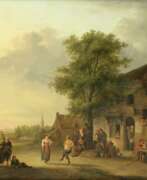



Ignatius Josephus van Regemorter was a Flemish historical, landscape, and genre painter and engraver. He studied under his father, Petrus Johannes, also in Paris, Antwerp, Brussels, and Ghent.
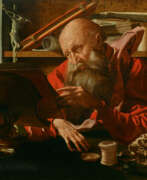

Marinus van Reymerswaele was a Dutch Renaissance painter mainly known for his genre scenes and religious compositions. After studying in Leuven and training and working as an artist in Antwerp, he returned later to work in his native Northern Netherlands. He operated a large workshop which produced many versions of mainly four themes: the tax collectors, the money changer and his wife, the calling of Saint Matthew and St. Jerome in his study.
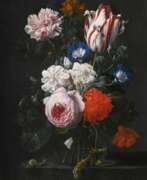

Nicolaes van Verendael or Nicolaes van Veerendael was a Flemish painter active in Antwerp who is mainly known for his flower paintings and vanitas still lifes. He was a frequent collaborator of other Antwerp artists to whose compositions he added the still life elements. He also painted a number of singeries, i.e, scenes with monkeys dressed and acting as humans.
